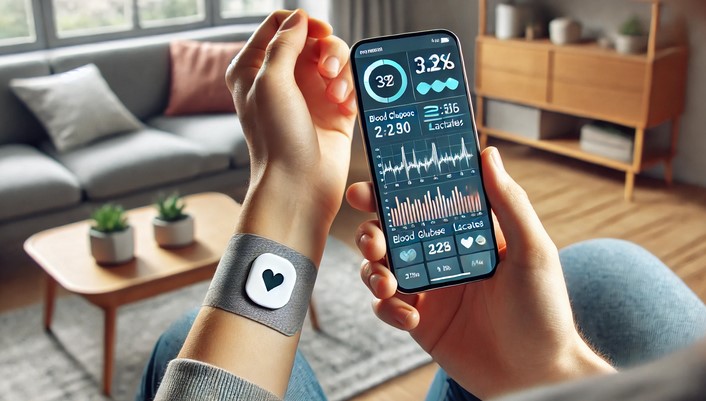
The healthcare industry has been undergoing a significant transformation in recent years, driven largely by advancements in technology. One of the most exciting innovations in this space is the rise of connected wearable patches. These small, lightweight devices offer a cutting-edge solution for real-time health monitoring and data collection. Unlike traditional wearables, such as fitness trackers or smartwatches, connected wearable patches are designed to be discreet and comfortable, providing users with continuous health data without the need for bulky or obtrusive devices. From chronic disease management to preventive care, connected wearable patches are poised to become an integral part of modern health technology. This article will explore the benefits, applications, and potential of these devices, as well as how they are shaping the future of personalized healthcare.
The Evolution of Wearable Health Technology
Wearable health devices have been around for over a decade, with fitness trackers, smartwatches, and heart rate monitors becoming household staples for those looking to monitor their health. However, despite their popularity, many of these devices have limitations when it comes to continuous health monitoring, data accuracy, and user comfort.
Enter connected wearable patches—innovative solutions that promise to fill these gaps. These patches are designed to be worn directly on the skin, typically for extended periods, providing real-time insights into a person’s health. Connected wearable patches are able to collect a broad range of data, from heart rate and blood oxygen levels to skin temperature and hydration status. What sets them apart from traditional wearables is their ability to seamlessly integrate with other digital health tools and cloud-based systems, enabling healthcare providers and users to access critical information in real time.
With the increasing demand for personalized health monitoring, particularly among individuals with chronic conditions, the advent of connected wearable patches represents a leap forward in providing more precise, continuous, and tailored healthcare solutions. These patches leverage sensors, Bluetooth connectivity, and advanced algorithms to deliver accurate data that can be used for everything from managing long-term conditions to promoting general wellness.
Applications of Connected Wearable Patches
The potential applications of connected wearable patches are vast, spanning across various fields of healthcare, fitness, and wellness. These patches are designed to collect data over extended periods, offering a level of monitoring that is simply not possible with traditional wearable devices. Here are some of the primary uses for these groundbreaking devices:
1. Chronic Disease Management
One of the most promising uses for connected wearable patches is in the management of chronic diseases. For individuals suffering from conditions such as diabetes, hypertension, asthma, or cardiovascular disease, continuous monitoring of vital signs is essential. Traditional methods often require periodic visits to the doctor or hospital for tests and check-ups. Connected wearable patches, however, allow for round-the-clock monitoring, enabling patients and healthcare providers to make timely decisions based on real-time data.
For example, connected patches can monitor blood glucose levels in diabetic patients or track heart rate and blood pressure in individuals with hypertension. This continuous stream of data can alert both patients and doctors to potential issues before they become critical, allowing for early intervention and better disease management.
2. Preventive Health and Wellness
Connected wearable patches are not just for patients with chronic conditions—they can also play a key role in preventive healthcare. For healthy individuals, these patches can track various metrics such as activity levels, sleep patterns, hydration, and even stress levels. This constant stream of data can help users identify patterns and behaviors that may be affecting their overall well-being.
For instance, connected patches can monitor skin temperature and hydration levels, alerting users to potential dehydration or heat-related issues before they lead to more serious health problems. This makes them an excellent tool for athletes, fitness enthusiasts, or anyone interested in maintaining optimal health. By receiving feedback in real-time, users can make proactive changes to their daily habits, improving their quality of life.
3. Post-Surgery and Recovery Monitoring
Another area where connected wearable patches are showing great promise is in post-surgery recovery. After undergoing surgery, patients need to be carefully monitored to ensure proper healing and to detect complications early. In many cases, this monitoring requires frequent visits to the hospital or clinic, which can be both inconvenient and costly.
Connected wearable patches simplify this process by providing continuous, real-time data that can be shared with healthcare providers. For example, a patch could monitor a patient’s heart rate, oxygen levels, and body temperature after surgery, providing instant feedback on their recovery process. This reduces the need for in-person visits and ensures that any potential issues are flagged early, making the recovery process smoother and less stressful for both patients and doctors.
4. Elderly Care and Monitoring
As the global population ages, the need for effective elderly care solutions continues to grow. Connected wearable patches are being used to monitor the health of older adults, providing both patients and caregivers with important insights into their well-being. These patches can track a range of vital signs, such as heart rate, blood pressure, and respiratory function, and provide alerts if anything goes out of range.
For elderly individuals living independently, connected wearable patches offer an added layer of safety. In case of a fall or sudden health issue, the patch can automatically alert caregivers or emergency services, ensuring a prompt response. This level of monitoring is crucial for elderly people with conditions such as dementia or those at risk of falls, providing peace of mind for both them and their families.
Advantages of Connected Wearable Patches
The rise of connected wearable patches is revolutionizing the healthcare industry in several important ways. Below are some of the key advantages these devices offer over traditional health monitoring methods:
1. Continuous and Real-Time Data
Unlike traditional devices that only collect data intermittently, connected wearable patches provide continuous monitoring. This ensures that healthcare providers and users have access to real-time data at all times, which is crucial for making informed decisions about health management.
2. Discreet and Comfortable
One of the most significant advantages of connected wearable patches is their discreet and comfortable design. Unlike bulky smartwatches or fitness trackers, these patches can be worn on the skin, often without anyone noticing. This makes them ideal for long-term use, as users can wear them without experiencing discomfort or drawing attention.
3. Better Health Insights and Personalization
The data collected by connected wearable patches can be analyzed using advanced algorithms, providing highly personalized health insights. These insights can help users understand how their lifestyle choices, environment, or medical conditions are impacting their health, allowing them to make better-informed decisions about their well-being.
4. Reduced Healthcare Costs
By enabling continuous monitoring, connected wearable patches can help reduce healthcare costs by preventing unnecessary hospital visits and enabling early intervention. This can lead to better outcomes for patients and reduce the strain on healthcare systems, ultimately leading to cost savings for both individuals and providers.
In conclusion, connected wearable patches are poised to transform the landscape of healthcare and wellness. From chronic disease management to preventive care and post-surgery monitoring, these devices offer real-time insights and continuous tracking, enabling better-informed decisions and improving overall patient outcomes. The discreet, comfortable design of connected wearable patches makes them an ideal option for long-term monitoring, whether for medical use or general wellness. As technology continues to evolve, we can expect these patches to become even more advanced, providing users with even greater control over their health and well-being. As we move forward, connected wearable patches will undoubtedly play a central role in the next generation of health tech, paving the way for more personalized, efficient, and accessible healthcare solutions.
